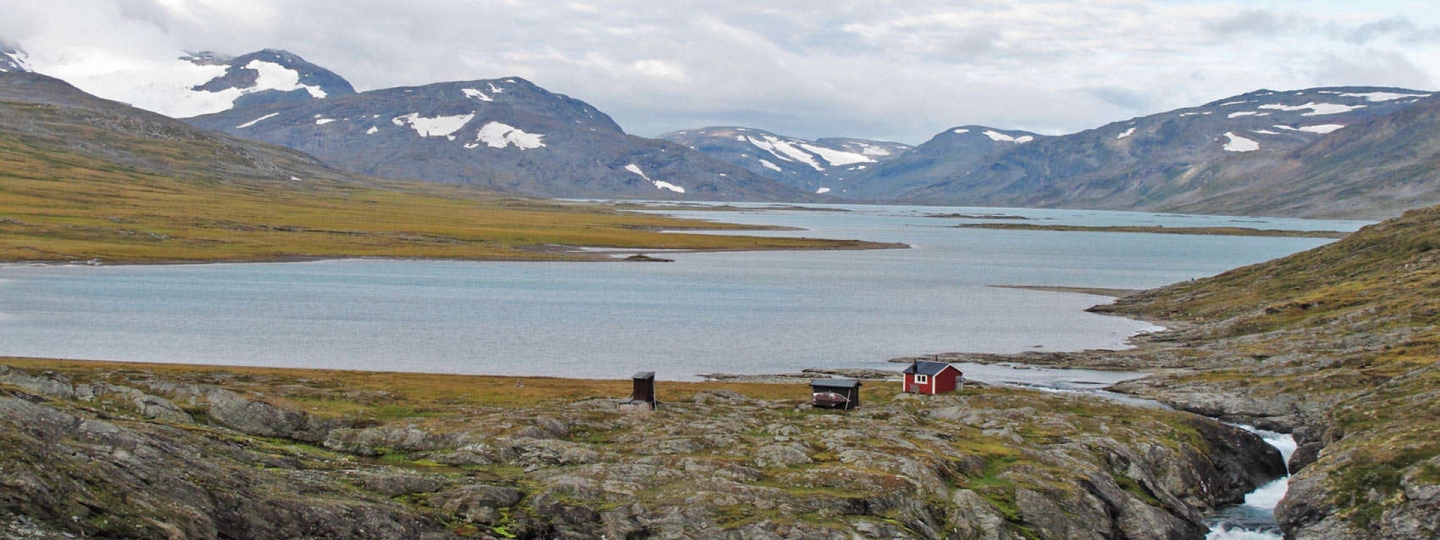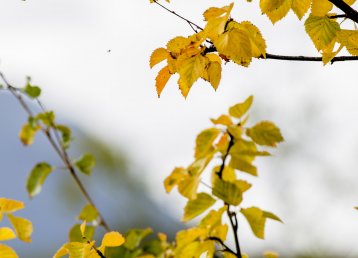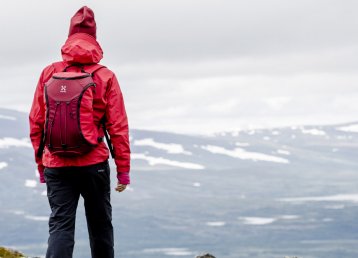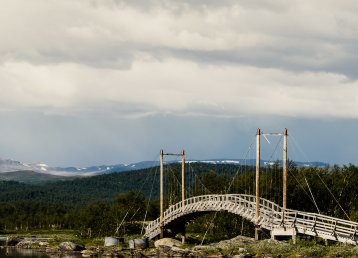Padjalanta/Badjelánnda means the higher land in Lulesámi. It’s Sweden’s largest national park, right next to the Norwegian border. The Padjelanta National Park is a part of the World Heritage Site Laponia, together with Sarek, Muddus/Muttos and Stora Sjöfallet/Stuor Muorkke National Parks, as well as Sjaunja Nature Reserve.
"– one of those who has had the desert for a pillow and called a star his brother. Alone. But loneliness can be a communion".
Consul Persson’s Cabin
The wind is a bit chilly in the shadow cast by the Sulitelma massif. I’ve put my tent up by the shores of Lake Sårjåsjaure, even if there’s space in the house I’ve actually come here to visit. I’m not overly fond of houses. What I’d really like to do is sleep outside, underneath the sky, but the weather won’t allow it today. The snow falling on the peaks around me has transformed into a drizzle down here, 860 metres above the sea. The one-person tent is the best solution to the problem.
The house I’m referring to, by the way, is ‘Consul Persson’s Cabin’ at Sårjåsjaure – on the map, it’s called ‘Sårjåsjaure Cabin’ – along the North Calotte Trail (Nordkalottleden). But it’s more commonly referred to as Consul Persson’s Cabin, a classic in the Swedish mountains. Dag Hammarskjöld, the former Secretary-General of the UN, used to come to Sårjåsjaure with his friends. His book, ‘Markings’, is the only company I allow myself on this trek.
I’ve read the book, again and again, my paperback is falling apart, but it always deserves another read. So even if I walk on my own, I’m not truly alone. I catch some trout by the Sårjåsjaure outflow with my fly fishing rod. One of them becomes a late dinner. The rest of them I release again. I don’t need them. The trout are biting hard and distinctively at the flies I cast as bait. You can tell autumn is approaching. Fish, like people, get less picky in autumn. It’s about fattening up. I cook the fish on the camping stove in the vestibule. It tastes lovely on crispbread.

Consul Persson's Cabin
On the map, it's called 'Sårjåsjaure Cabin' – along the North Calotte Trail (Nordkalottleden). But it's more commonly referred to as Consul Persson's Cabin, a classic in the Swedish mountains. Photo by Håkan Stenlund.
"Never look down to test the ground before taking your next step; only he who keeps his eye fixed on the far horizon will find the right road".
Ylva
It’s 18 kilometres from Consul Persson’s cabin to Staloluokta. But it’s only six kilometres down to the Staddajåkkå cabins where Ylva Pavval is the cabin hostess. Ylva is from Jokkmokk, and the family has its reindeer here. She’s spent her summers in Staloluokta before. Well, actually her entire childhood. I thought it was time now to spend some time apart from them, from the family I mean, she laughs. It’s both right and self-explanatory that the Sámi village manages the cabins along the trail here in the park.
I interrupt Ylva in the middle of the morning dishes, which I think she almost welcomes. We talk for a bit. The water in the sink goes cold.
Three Sámi villages, Jåhkågasska, Sirkas and Tourpon, share the rich reindeer grazing lands here. Padejalanta became a National Park in 1963 after a decision taken by the Swedish Parliament. The author Sten Selander had suggested that the area be made into a National Park in 1957. The reason is that the terrain is located high above sea level, giving the area a unique flora for a mountain region. Today Badjelánnda is a natural part of the Laponia World Heritage. The word Badjelándda, the high land, is self-explanatory. Out of the total park surface, 1,984 km2, there’s as much glacier as mountain-birch forest, 14 km2 of each (even if global warming has left its traces, of course). There are also two large, dominating lake systems here: Virihaure and Vastenjaure. They turn the area into lovely scenery: a high plateau surrounded by the large, more alpine, massifs Sarek and Sulitelma.
Also read
World Heritage LaponiaThe cabins
There are 13 cabins along the Padjelanta trail, the seven cabins within the Laponia area are maintained by Badjelánnda Laponia Turism as assigned by Laponiatjuottjudus. The other cabins are owned by STF, The Swedish Tourism Association.
"Never measure the height of a mountain until you have reached the top. Then you will see how low it was."
Carl Linnaeus
Virihaure feels almost like an inland sea by Staloluokta. ‘Stalo’ is a kind of hub: both the Padjelanta trek and the North Calotte trail meet here. But mostly it’s because lots of people come here. Some arrive by helicopter, and some leave by helicopter. Most trekkers I meet are on their way there. “Tonight I’ll have a sauna in Staloluokta”, says a German lone trekker I meet by the bridge across Viejejåkkå. “I hear they sell beer too”, he continues and looks thirsty.
Carl Linnaeus came to Virihaure from Jokkmokk in 1732. From what little I’ve read of his travel stories he seemed to think Staloluokta was more or less ok. But he didn’t like the mountain fish that was served: “… fresh, boiled arctic charr. I could not eat it, it was not salted sufficiently”. But the cheese and the dumplings made with reindeer blood he liked. From his notes, we understand that he was a bit impressed by the Sámi, and he established that they had a healthy lifestyle, worth learning from. Linnaeus even started sitting down cross-legged, just like the Sámi, to stretch his muscles. The visit to Virihaure isn’t nearly as bad as it was when Linnaeus and his guide got lost in the miserable Lyxmyran bog west of Lycksele, in the southern part of Lapland, during an earlier trip. That’s when he wrote: “A priest would not be able to describe hell to be worse than this… I have traipsed through the underworld.”
Padjelanta is known for its rich flora, a multitude of plants grow along the trail, stretching out as far as the eye can see. Many botanists have studied and documented the splendour of flowers in Padjelanta. This is home to plants not found anywhere else in the Swedish Lapland mountains. Read more about the mountain flora here.
"The dust settles heavily, and air dies, the light fades in a room we are not always prepared to leave."
A lone wanderer
The highest point of the Padjelanta trek is about 950 metres between the Tuottar and the Tarraluoppal cabins. Nothing to write home about. And absolutely no trial of manhood or a traipse through the underworld. I meet people with audio devices connected to their ears. They’ve hardly got time to say “Hello”. I always walk without equipment in my ears. I don’t want to miss the howling wind and the rain, catching me up in the valley. Nature is never completely quiet. Not even here. A bit further ahead I hear the call of a golden plover, a symbol for the desolateness and melancholy of the mountain world.
There are both advantages and disadvantages to being a lone wanderer. When you camp, you can’t rely on anyone else. You have to get your own water boiling, put your own tent up and talk to and with yourself. I usually go with people who do all this naturally. They do everything in the right order and with an efficiency that impresses you. You almost only have to watch and inflate your own thermal rest. But not this time and since I do things with a slight lack of order – perhaps better described as the right order but in my own way. I’ve brought my large camping stove this time. I’ve also brought a sleeping bag that’s too thick and a thermal rest that takes up too much space. I make a mental note to buy some new stuff when I get back home. Since I spend so much time outdoors, I think there’s nothing wrong with having good gear that weighs less, takes up less space and works better. It’s a question of comfort and efficiency. The advantage of hiking on your own is, of course, that you only have to look out for yourself. You can walk wherever you want, choose your own goal. You can eat when you feel like it, rest when you need to, not when someone else needs to. In some ways, it’s also a challenge to walk alone. You have to solve situations that occur to your best ability.
"To be free, to get up and leave everything behind – without looking back. To say yes."
Reflecting
The weather isn’t that bad as I walk. Not that good either. The wind is persistent, the clouds low, the peaks disappear into grey fluffy expanses of rain. But it’s no storm, so I’m still walking easily. Up until I turned 25 everything I owned could fit in a rucksack that was only a little bit bigger than the one I’ve got on my back right now, more or less. I think that was the time of my life when I was the freest. Today, I’ve amassed thousands of things, and I’m more tied down. I often think about that very question: would I be able to walk away and not look back? It’s an interesting question to ponder because it reveals what’s important in life, in every way. Things are often just something we collect because we want to be someone else. But life is still bigger than your own reflection. Of course, I’m not talking about being irresponsible. To walk out and leave your children or your mission in life behind isn’t the same as to be prepared to “not look back”.
Conclusion
What I’m talking about is what ties us to the place on Earth where we live. Is it because we like it there or because we’re trying to like it there? Or even worse: trying to make it look like we like it there. All I need fits in a rucksack. And the roof over my head is a tent. So why do I have so many other things? One evening, below the Tarrekaise cabin, where the Pearl River runs near the trail, I see a couple of arctic charr biting, and I cast a fly. One of them takes the fly, and I have dinner for the evening. It really doesn’t have to be more complicated than that.
Learn more
Padjelantaleden is about 150 km long and goes through parts of the national park. You can start your hike from Ritsem or Kvikkjokk. It’s a relatively easy hike, with most cabins situated about 13–15 km apart, but sometimes a bit further.
If you’re looking to hike along the Padjelanta Trail, have a look at these links for more information.


























